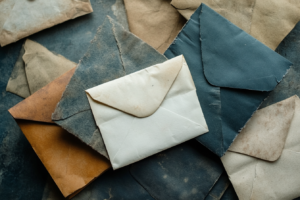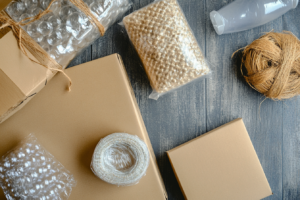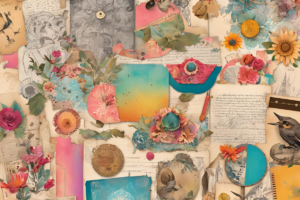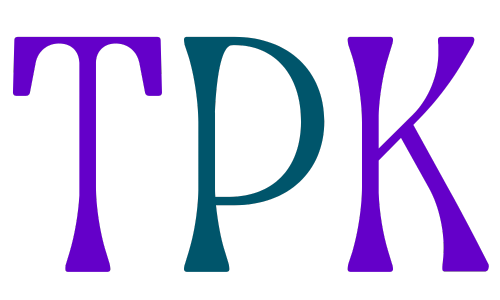Junk journaling is a creative and eco-friendly way to document memories, thoughts, and ideas. Unlike traditional journaling, junk journals embrace imperfection and incorporate everyday items that might otherwise be discarded. By upcycling household items, you can create a unique, personalized journal that tells your story while reducing waste. In this post, we’ll explore how to repurpose old receipts, envelopes, and other common household items into beautiful elements for your junk journal.
Repurposing Old Calendars and Planners for Creative Pages
Old calendars and planners are often filled with beautiful imagery, grids, and layouts that can be repurposed into stunning pages for your junk journal. The colorful illustrations from calendar pages can serve as eye-catching backgrounds, while the grids and lines from planners are perfect for creating structured layouts or writing spaces. Instead of tossing them out, give these items a second life in your journal.
To incorporate calendar pages, simply cut out the images or sections you like and glue them onto your journal pages. You can layer them with other materials like tissue paper, fabric, or magazine cutouts for added texture. Planner pages, on the other hand, can be used as-is for jotting down notes, lists, or doodles. The pre-printed dates and grids can also add a unique, organized feel to your journal.
Old calendars and planners are not only visually appealing but also carry a sense of nostalgia. By using them in your junk journal, you’re preserving memories and creating a meaningful connection to the past. Whether you use them as backgrounds, dividers, or decorative elements, these repurposed pages add depth and personality to your journal.

Transforming Envelopes into Functional Pockets
Envelopes are a junk journaler’s best friend. They can be easily transformed into functional pockets for storing loose items like photos, tickets, or handwritten notes. Simply glue the sides of an envelope onto your journal page, leaving the top open to create a pocket. You can also cut envelopes into smaller sizes or shapes to fit your design.
For a more decorative approach, consider painting or collaging over the envelopes to match your journal’s theme. You can also use patterned envelopes or ones with interesting postmarks to add character. Envelopes with windows can be particularly fun, as they allow you to peek at the contents inside, adding an interactive element to your journal.
Envelopes are not just practical—they also add dimension and intrigue to your pages. By upcycling them, you’re giving new life to something that would otherwise be thrown away, while also creating a functional and beautiful feature in your journal.

Using Old Magazines and Catalogs for Collages
Magazines and catalogs are treasure troves of colorful images, patterns, and text that can be used to create stunning collages in your junk journal. Cut out images, words, or phrases that resonate with you and arrange them on your journal pages. This is a great way to express your personality and interests while repurposing materials that would otherwise end up in the recycling bin.
To make your collages more cohesive, consider sticking to a specific color scheme or theme. You can also layer magazine cutouts with other materials like fabric, lace, or tissue paper for added texture. Don’t be afraid to experiment with different layouts and compositions—junk journaling is all about creativity and self-expression.
Collages are not only visually appealing but also a great way to document your thoughts and inspirations. By using old magazines and catalogs, you’re reducing waste and creating a unique visual narrative in your journal.

Incorporating Fabric Scraps for a Tactile Experience
Fabric scraps are another fantastic material for junk journaling. They can be used to create soft, textured pages, embellishments, or even covers for your journal. Old clothing, linens, or leftover fabric from sewing projects can all be repurposed into beautiful journal elements.
To use fabric in your journal, consider cutting it into shapes like hearts, flowers, or tags. You can also use it to create pockets, tuck spots, or page reinforcements. Fabric can be glued directly onto your pages or sewn onto them for a more durable finish. Adding fabric to your journal not only enhances its visual appeal but also makes it more tactile and engaging.
Fabric scraps also allow you to incorporate patterns and colors that might not be available in paper form. Whether you use them as backgrounds, borders, or accents, fabric adds a unique and personal touch to your junk journal.

Repurposing Packaging Materials for Unique Embellishments
Packaging materials like cardboard, tissue paper, and bubble wrap often get discarded, but they can be transformed into unique embellishments for your junk journal. Cardboard can be cut into shapes or used to create sturdy journal covers, while tissue paper can be crumpled or layered for a delicate, textured effect.
Bubble wrap, on the other hand, can be used to create interesting patterns and textures. Simply paint over the bubble wrap and press it onto your journal pages for a fun, bubbly design. You can also use it to add dimension to your pages by gluing small pieces underneath other materials.
By repurposing packaging materials, you’re not only reducing waste but also adding creative and unexpected elements to your journal. These materials are often free and readily available, making them an excellent choice for budget-friendly junk journaling.

Junk journaling is a wonderful way to combine creativity and sustainability. By upcycling household items like receipts, envelopes, magazines, fabric scraps, and packaging materials, you can create a one-of-a-kind journal that reflects your personality and values. Not only does this practice help reduce waste, but it also encourages you to see the potential in everyday objects. So, the next time you’re about to throw something away, ask yourself: “Could this be treasure for my junk journal?”
Have you tried junk journaling as a form of self-care? For more about junk journaling, check out this blog post.

